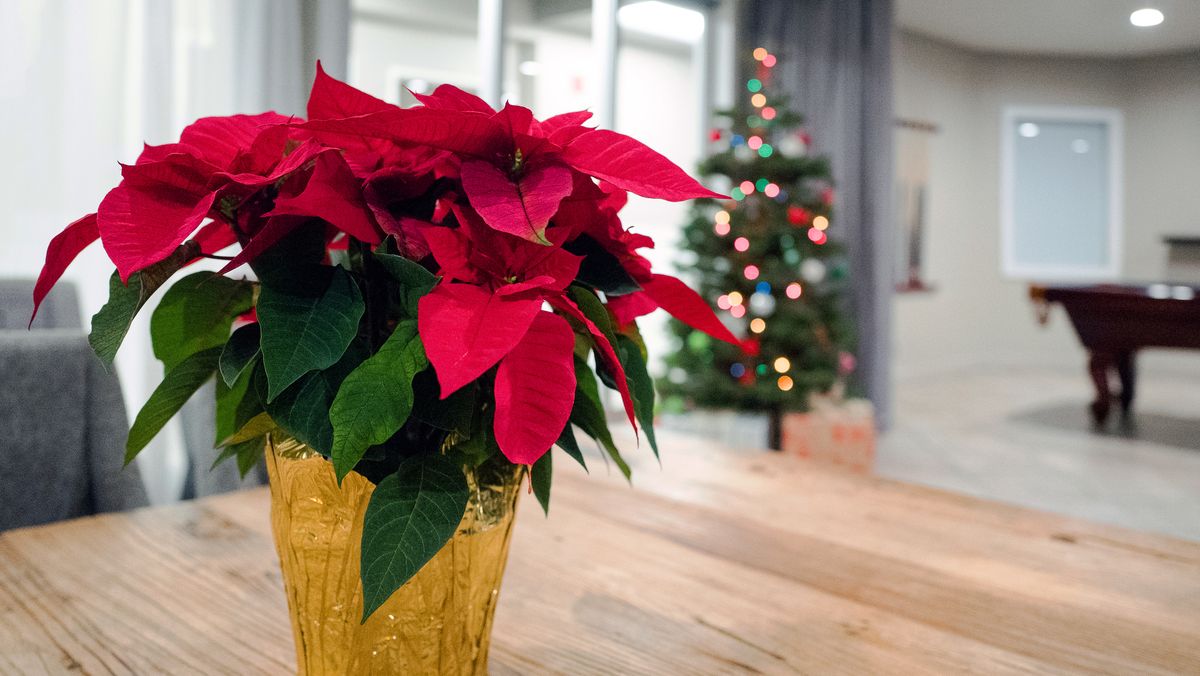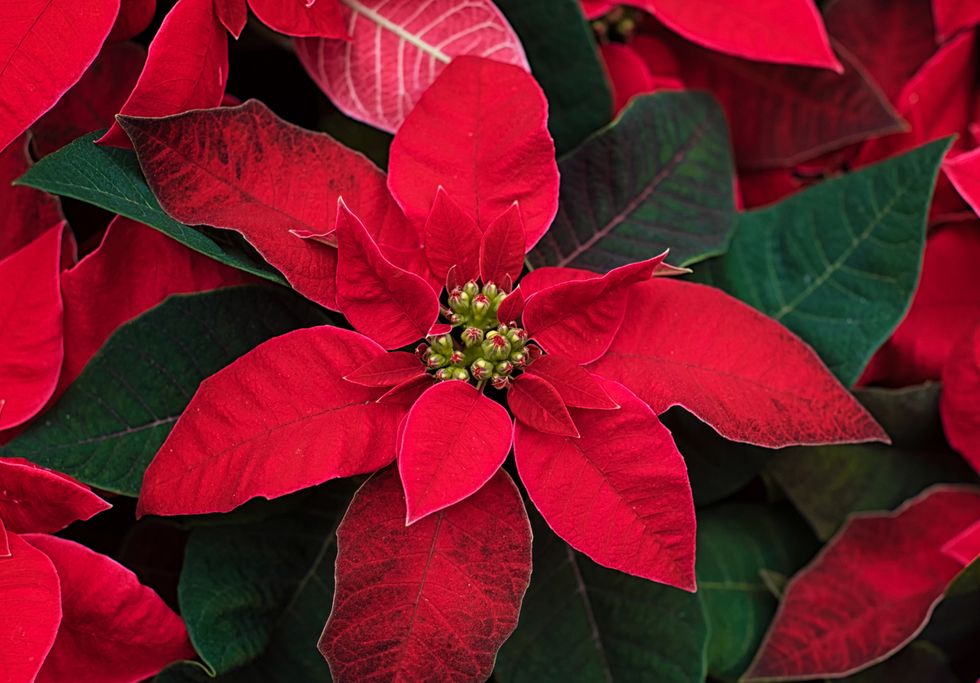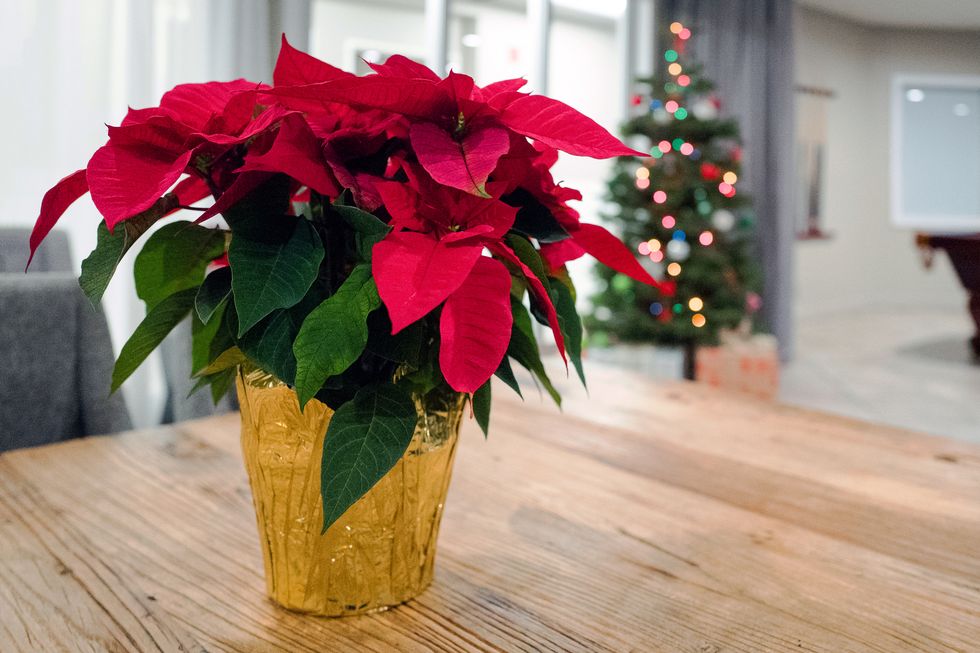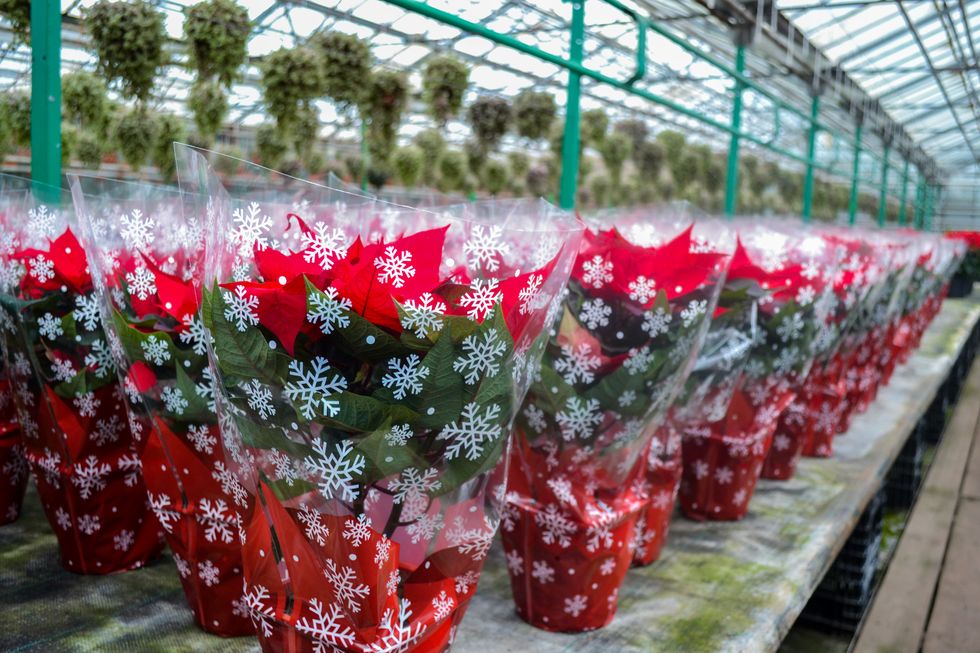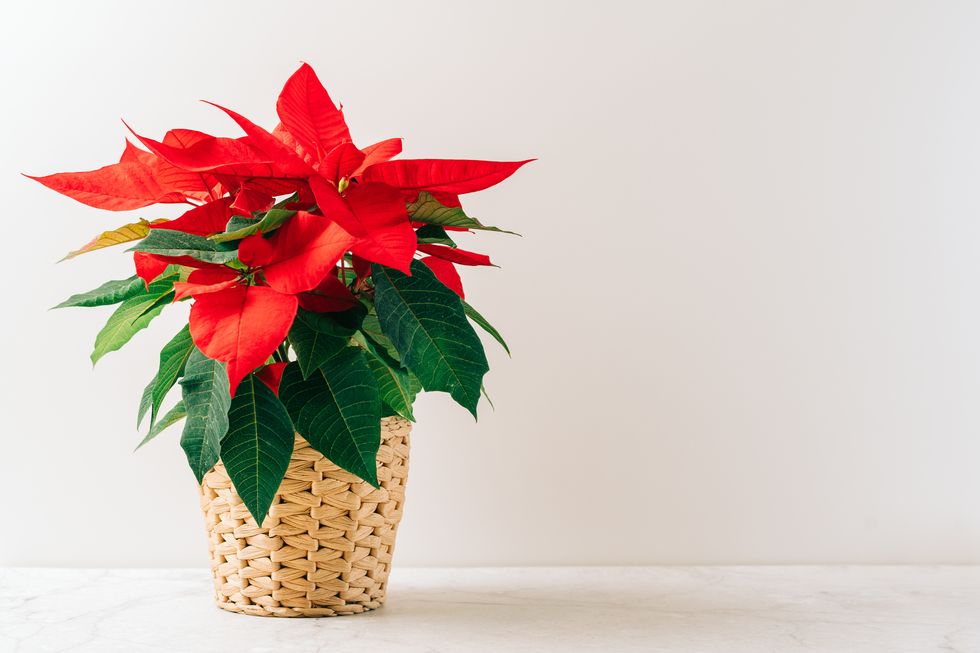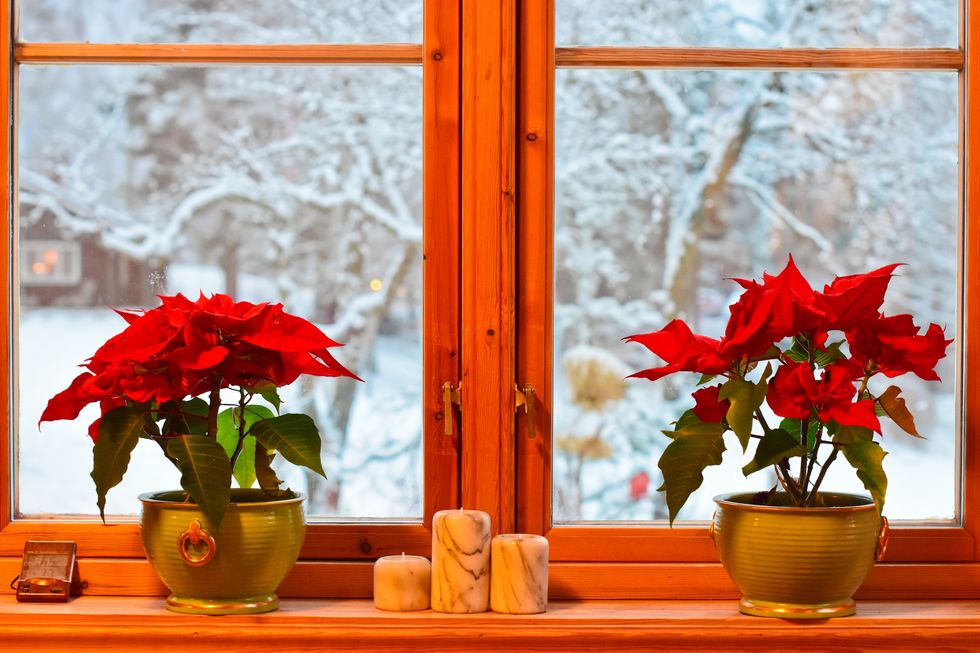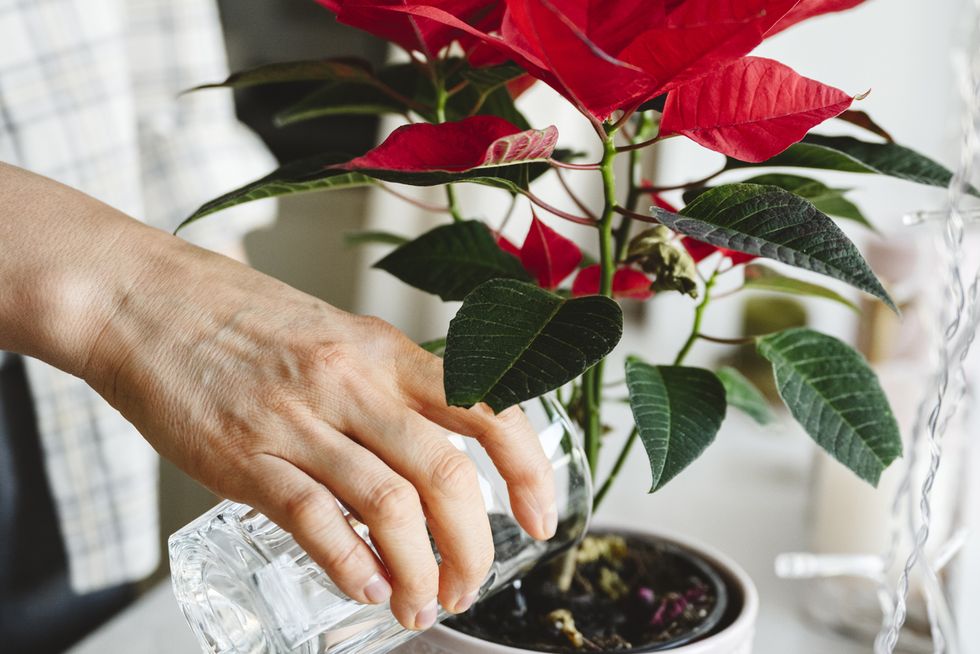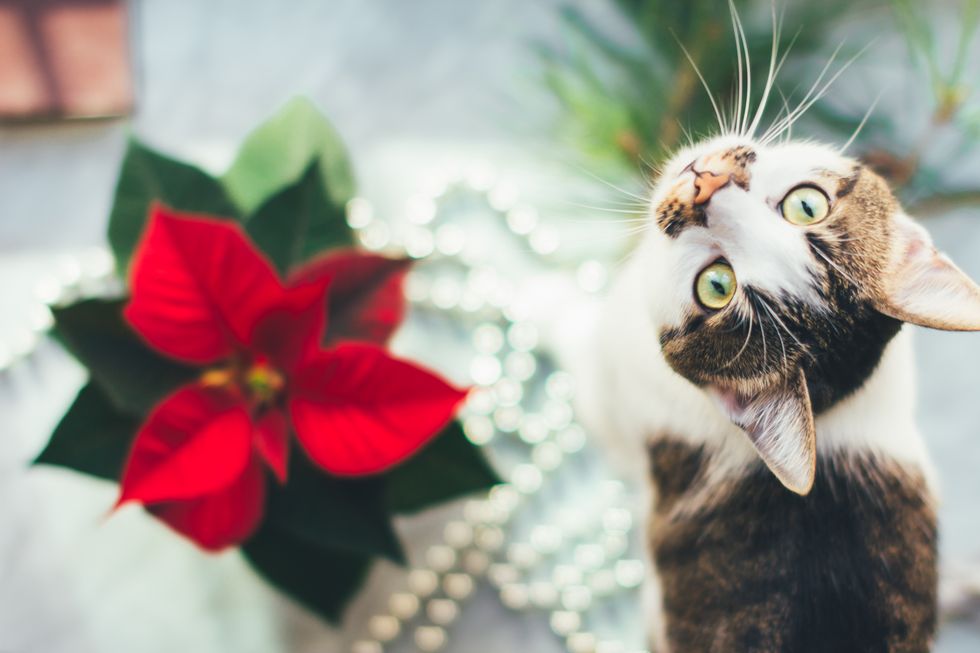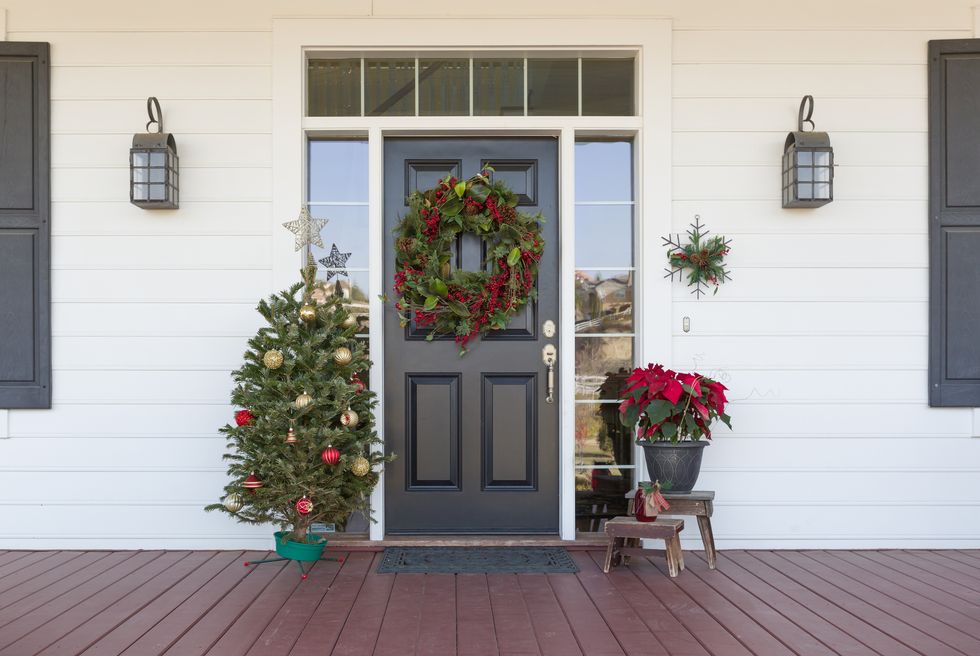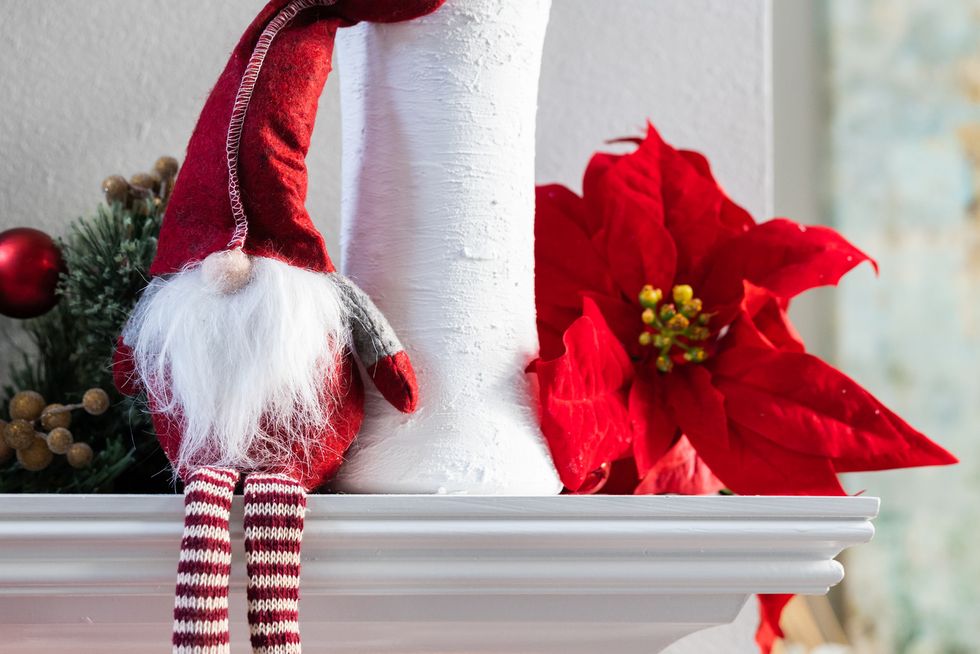No potted plant typifies the holidays more than the iconic bright red poinsettia. It almost doesn't feel like Christmas without one or two of these cheery, brilliantly colored plants in your home.
First grown as houseplants in the mid-twentieth century, the poinsettia is a shrubby, somewhat gangly, tree in its native Mexico. In the wild, it typically blooms in December, hence why it became known as a Christmas plant—but you don't have to necessarily say goodbye once the holiday passes.
"With the right care, you will get to enjoy your plant in bloom for six weeks to two months," says Chris Berg, director of marketing at Dümmen Orange, one of the largest poinsettia breeders in the world. "They're also great as a long-lived cut flower, which will last in vases for a few weeks."
With that, here are 10 simple ways to ensure you can enjoy your poinsettia all season long—and beyond.
1. Look for a Healthy Poinsettia Plant With Bright Centers.
You'll probably start seeing poinsettia plants for sale around mid-November. "Look for plants that have tightly closed tiny yellow flowers in the middle," says Berg. "They should be greenish. As they open, they turn yellow, which indicates that the plant has been in bloom for a while and may not last as long in your home." Avoid any that are shedding pollen—that plant is past its prime.
2. Make Sure the Poinsettia Plant Looks Good Underneath the Wrapping.
Pull back the plastic wrap when you're shopping, because any plant that has yellow foliage or dropped leaves isn't going to look any better once you get it home. Avoid it!
3. Protect Your Plant on the Trip Home in the Car.
Cover your plant when bringing it home, especially if it's below 40°F. Most nurseries will provide a plastic sleeve, but if they don't, cover your plant with a shopping bag—and don't let it sit in the chilly car for long!
4. Display Your Poinsettia in a Pretty Vessel.
Once you get your plant home, remove the plastic sleeve and the foil pot cover, which can hinder drainage. You don't have to repot this plant, but you can pop the entire pot into a more decorative vessel, if you'd like.
5. Give Your Poinsettia a Good Amount of Sun.
When grown in the wild, poinsettias are tropical, so they love light and will tolerate full sun—but they'll put up with almost any kind of light, says Berg. That's because poinsettia plants purchased for the holidays were likely grown in a greenhouse, so they're used to tolerating—and thriving in—indirect sunlight. All of that's to say you could really put your poinsettia wherever you'd like in your house to enjoy a splash of holiday color in any room. Fair warning: In a very dark corner, they do tend to stretch and become leggy.
6. Make Sure the Temperature is Right for Your Poinsettia.
As long as it's at least 55 degrees, your Christmas plant should be just fine—but 65 to 70 degrees is even better. (No hotter!) Yes, this means that being able to display your poinsettia as outdoor décor will depend on the climate where you live.
7. Water Your Poinsettia Regularly—But Don't Go Overboard.
Poinsettias prefer consistent, light moisture—but they don't want to stay soaking wet. Add a cup or so of water to the soil every two to three days, then feel the pot's weight, which is a better indication of when to water the next time. Dump out any water that sits in the saucer, says Berg.
"The biggest mistake people make is that they let [poinsettias] dry out for a day or so," says Berg. "In that case, the plant will begin dropping leaves to try to save its root system." If that happens, there's no going back. Your plant isn't going to recover this year, so compost it and buy a new one!
8. Keep Your Poinsettia Away From Pets.
Let's start by saying that despite what you've heard, according to the ASPCA, the poinsettia plant is "generally overrated in toxicity." However, if a stem is broken, the plant emits a white, milky sap, which can be irritating to mouths or skin if not washed off. So if your pet ingests pieces of a poinsettia, he or she may get an upset stomach—though likely nothing worse.
With that said, you still don't want your cat or dog eating your poinsettia! Try to keep the plant away from nibblers—but if your fur baby has ingested some, call your vet just in case. It's aways better to be safe than sorry!
9. Use Poinsettias in Cut Arrangements Before Completely Tossing Them.
If your plant is looking leggy or has dropped its lower leaves, go ahead and cut the stem to display its flowers in a vase. Wear gardening gloves, though, because the sticky sap can be irritating to skin.
10. Replant Your Poinsettia for Next Year (If You're Ambitious!)
In warm climates, you can plant poinsettias outdoors where they'll root and continue to bloom. They can survive winters outdoors in USDA Hardiness zones 9 to 11 (find your zone here). But for most of the country, poinsettias are notoriously finicky about reblooming and may not be worth saving for next year.
If you're feeling ambitious, keep it in your sunniest window, maintain moisture, and place it outdoors after all risk of frost is past. Once outdoors, you can feed your plant regularly to stimulate new growth. Then in the fall, bring it indoors and give it 12 hours of absolute darkness (don't even expose it to a night light!) each night. "You might get it to color, but it won't be shaped nicely," says Berg.
In truth, poinsettias are inexpensive, so save yourself the effort, compost yours, and choose a new beauty next year.
Bonus Tip: Go Beyond Red.
Nowadays, red is still the most popular poinsettia color—especially for Christmas—but it also comes in a myriad of other colors (like pink, green, orange, yellow, and plum) and forms, including some with speckles or splashes.
And now, onto our favorite part...
Poinsettia Arrangement and Display Ideas
- Display poinsettias outdoors on your front porch, or in window boxes if you live in a warm climate where it doesn't drop below 50 degrees at night.
- Line your mantel with poinsettia-embellished garland. (Just don't forget floral picks to keep the cut poinsettia flowers fresh!)
- Float single blooms in a pretty bowl.
- Place single live flowers in a centerpiece or wreath. (Again, use floral picks to keep them fresh.)
- Fill a large planter pot with a blooming amaryllis in the center, surrounded by smaller pots of poinsettias.
- Use a single stem in a floral pick as gift topper.
Arricca Elin SanSone has written about health and lifestyle topics for Prevention, Country Living, Woman's Day, and more. She’s passionate about gardening, baking, reading, and spending time with the people and dogs she loves.
